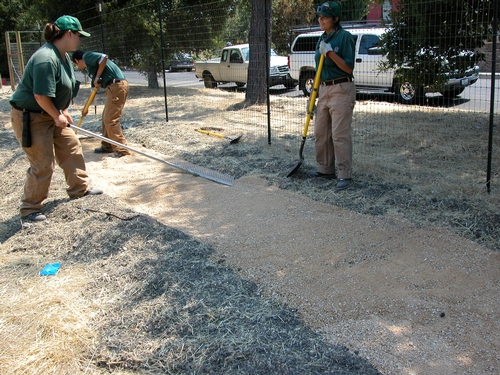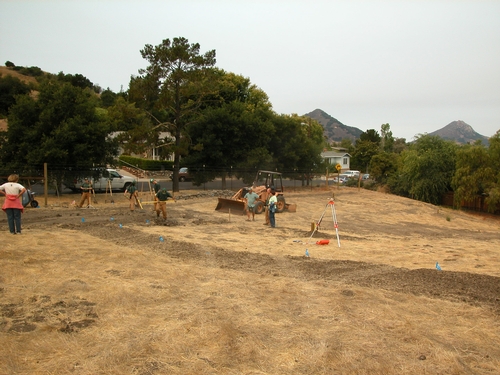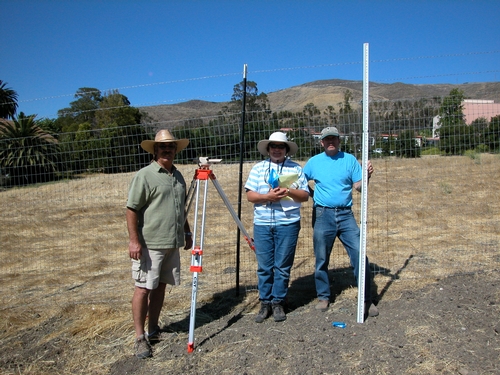- Author: Amy Breschini
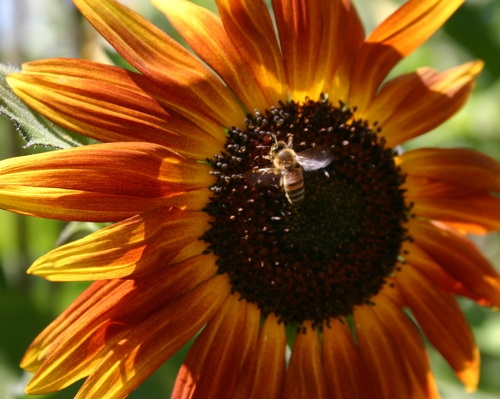
The UC Master Gardeners are now accepting applications. The deadline is quickly approaching! Please have your application postmarked by November 20th.
Please click on the underlined links below to find the application and more information about our program.
Photo by Cindy Muther
2009 Open House Invitation
Master Gardeners Program Information
Application for Master Gardener Program
- Author: Amy Breschini
The Master Gardeners of San Luis Obispo County recently celebrated its most successful Tomato Extravaganza to date – due in large part to the generous support of its donors and the community.
Despite 110-degree temperatures, a record 400+ visitors showed up to sample dozens of varieties of tomatoes and basil, view fruit-tree grafting, worm-composting demonstrations and gather tips for growing healthy, sustainable gardens.
While this annual event is free to the public, proceeds from tomato and basil plant sales help support the Master Gardeners’ Demonstration Garden currently being developed in San Luis Obispo.
We’d like to thank the following organizations for contributing to our “edible” festival:
Achievement House
Cal Poly Organic Farm
California Rare Fruit Growers
San Luis Obispo Botanical Garden
Special thanks go to Tutti Frutti growers for supplying most of the tomatoes for the tasting. Many thanks to The Tribune, Journal Plus Magazine, New Times, and the Santa Maria Times for publicizing our event.
And for those already planning next year’s garden, the winners of the tomato and basil taste tests included Dona, Red Zebra and Sarah Black tomatoes; and Anise, Lime and Thai basil.
If you have any gardening questions that can’t wait until next year’s Tomato Extravaganza, feel free to contact the UCCE Master Gardener Helpline at 781-5939.
Sincerely,
Nell Wade
President





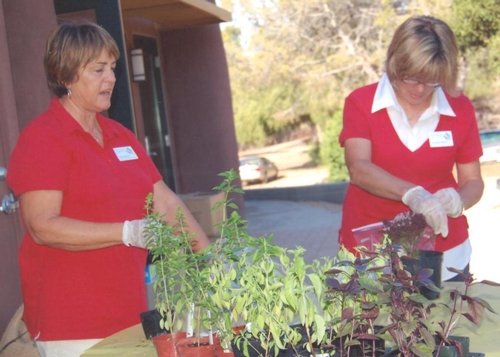

- Author: Amy Breschini

Sadly, Californians dispose of 5.6 million tons of food each year, using 16% of our landfill space! In our county, the local schools started composting their cafeteria waste a few years ago, with the help of the San Luis Obispo County Integrated Waste Management Authority. They have a school based education program that encompasses all types of composting, including vermiculture. UC Davis and UC Berkeley also are participating in vermiculture to reduce campus cafeteria waste. If you are interested in finding more ways to reduce the amount of food that goes to the landfills, check out this link:http://www.ciwmb.ca.gov/foodwaste/
Our worm composting class is 2 hours and includes setting up your own "Wriggly Wranch" worm bin, (which is made of sturdy black recycled plastic), a nice little book (printed on recycled paper), recycled coconut fiber for bedding, a cup of worms and several years of advice. Our instructor Alice has been "vermiculturist" for years and always has a few more funny stories to share!
Photos by Lee Olson





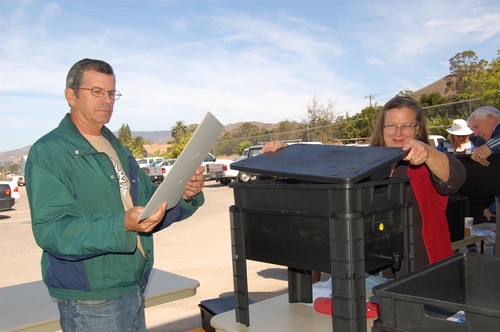
Some funny and important rules to worm composting , based on Alice's class and testimonials that I've heard! (and it's a treat to find someone else who has worms and you can share your experience, because your friends and family just won't get it!)
Here's just a few tips:
- Don't open your mouth when opening your worm bin! (Remember fungus gnats love decomposing, moist organic matter!) Thank you Alice! That's the most important rule!
- Don't over fuss with them- just let them be! (someone told me that they counted them often to see if they were reproducing..)
- Don't put a ton of potatoes in it. Rotting potatoes are horrid and Alice's worms weren't putting up with it.
- Don't put in big pieces of broccoli (it stinks beyond words!)
- Don't scream if you get something really gross (because your neighbors will think you are weird enough to have a box of worms out there to begin with).
- Don't add bread or yeast products or dairy or meat.
- Don't add lemons and oranges (too acidic).
- If your worm bin is soggy wet- add newspaper or shredded to give your worm some bedding.
- If you have ants, place each leg of the bin in a cup of water. Ants will not cross water.
- Slug Problems inside your bin: Place copper tape around the legs of the bin. Slugs and snails will not cross over.
- Too many fruit flies, try little bottles with a bit of apple cider vinegar in the bottom. Cover the opening with Saran Wrap and punch holes in it. They will be attracted to the strong fermenting odor and not be able to escape the bottle.
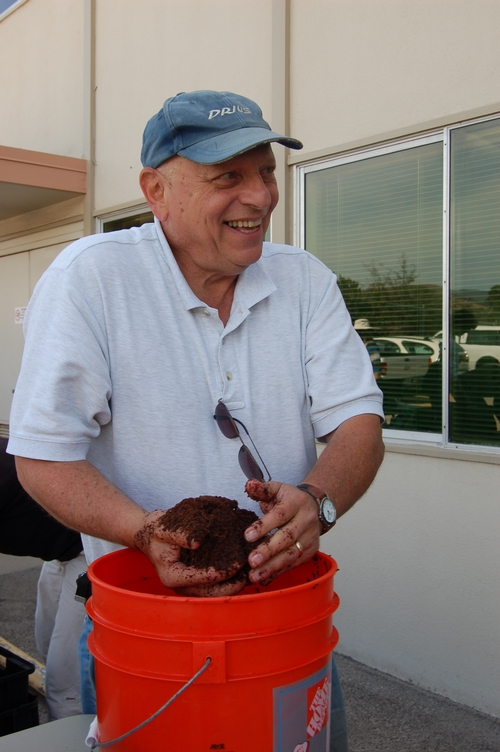

Here's how the worm composting boxes work:
- The bottom box is for catching "tea" (the moisture falling from the castings and decomposing organic matter) It has a spigot for easy access.
- The second box up has holes in the bottom, which the tea can exit. This box is where you start with your coconut fiber bedding, worms and fresh food.
- Add food, coffee grinds, crushed egg shells, etc.. Most people group the same foods together, so the worms can move into the areas that are ready to be eaten and then, if they for some reason do not like it, you can easily remove it later. Keep your lid on this box until it is full.
- As this box becomes full to the top, you may sit the next box right on top and start adding food. This is also a time you can incorporate some shredded or torn up paper (soy based newspaper inks). The worms will eventually all leave the second box and go into the top box. This takes a while! You will eventually find that the bottom box is all castings and very few worms.
- Removing your compost from the box: if you gently tilt your box of worm castings and brush them off, any remaining worms in the box will burrow deeper (they burrow away from light). When you have a few inches left at the bottom, you will notice that any worms that were there had all gone to the bottom of the bin. You can incorporate this small amount back into your other working bin.
- Author: Amy Breschini


So excited! Here's the truck backing in with the delivery of the garden shed. We were so fortunate that Susie got a great discount on it from Oak Country Lumber and Ranch Supply in Santa Margarita because it was one of their samples in the store. At this point I'm wondering how on earth we will unload this thing!


It was moved into final position by two boards with a pipe in between.

The delivery guys- who made it look easy!

A beautiful coat of green paint was applied!


The final project for the day was planting iris around the rock.

The kids were proud, happy and tired by the end of the week!
- Author: Amy Breschini
So much has happened!
Here's a little summary of the garden to date:
(Please forgive me if I forgot someone or something...things are moving and shaking now! A special thank you for Susie who has been recording everything daily! Much of this was extracted from the communication that she has been doing with the Demo Garden Committee! Please feel free to comment on the post if you believe I forgot something or if there are any corrections.)
Weds. July 8: An irrigation committee (Ray and Wes from the new class are the expert leads along with our architect Scott Dowlan, and the Giambalvo bros.) met to lay out a plan of attack!
Tuesday, July 14: Wes, Ray, Ed, Susie, and Thorv met with Mary B. to go over details of the installing the irrigation. We've had an "all clear" from the utility companies that there are no underground utilities present on our site!
Thursday, July 16: Wes, Ray, Bill, Ed, and Thorv mapped out with blue spray paint the lay out of the irrigation system
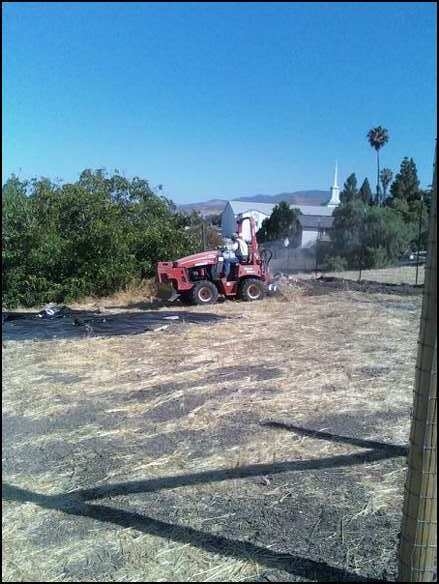

Friday, July 17: Trencher was brought in from United Rentals as a donation coordinated by Wes! The entire layout was trenched out from 8:30- 10:30am. Bill helped out this afternoon with shoveling!
Saturday, July 18: Irrigation assembled and installed all with tracing wire by Wes and Bill and supported by Susie and Thorv. Wes received a donation for all of the pipe from Farm Supply San Luis Obispo! System was fully checked for leaks. 6 Hose bibs and 4 valve box manifolds. There are ball valves at all 4 corners of the irrigation, so there's easy shut off in the case of a leak. The pipes that are near any old underground rocks or concrete have been insulated so that there's will be no rubbing or contact with abrasive edges. We owe Wes and Bill a very big thank you for all of there expertise and hard work! We have our own water meter that will track the water used for the garden and great water pressure! Yippee!!!

Pathways: There's lots of rules and regs to meet the American's with Disabilities Act compliance. Many excruciating hours were spent surveying the area with Ed, Ray and Susie to find the best pathways possible to meet this compliance! Here's a link for more information about the regulations for ADA compliance:
http://www.ada.gov/reg3a.html#Anchor-18203
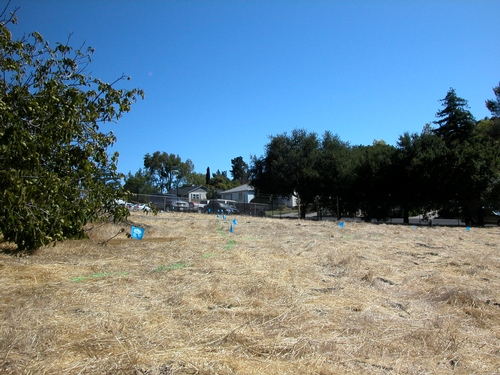
Monday, August 10: We were lucky enough to have the CCC Youth Group come for a week to help out! They arrived about 9:00am! Thorv, Marylou, Susie, Ray, Ed, Mary and Amy were present. Thorv did a very nice job of explaining to them what the mission of the MG program is about and how we hope to use the demo garden. Then Ed and Ray showed the group how to use the transom to map out ADA compliant pathways and spent the rest of the day helping to supervise the crew. They started out the raking out the soil at the utility pad area and all the pathways and using the soil compression vibrator- which broke its' belt almost immediately! Once that was fixed, then the engine kept flooding.. so there's always a few little bumps in the road. Ray coordinated borrowing the county golf course compactor for the next couple of days. He’s not sure if they will stay on schedule right now, but the DG is being deliverered tomorrow! There's a whole lot of surveying and using levels. It's very challenging and Ray and Ed are really doing an awesome job at meticulously checking and rechecking our grade to meet the ADA compliance!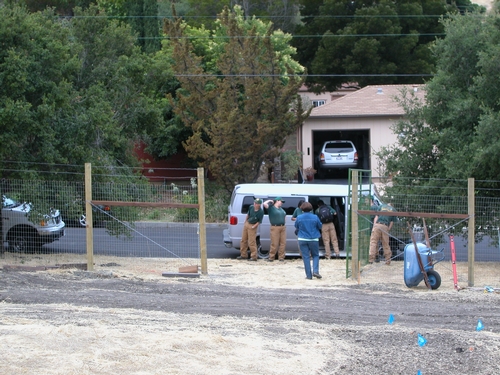
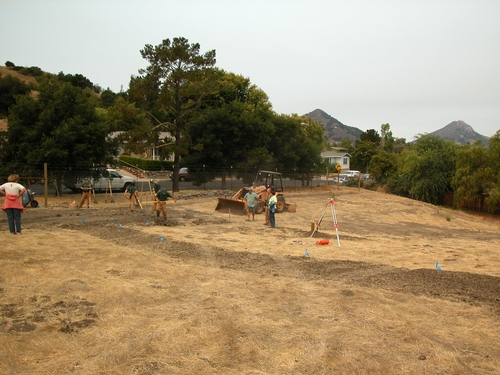
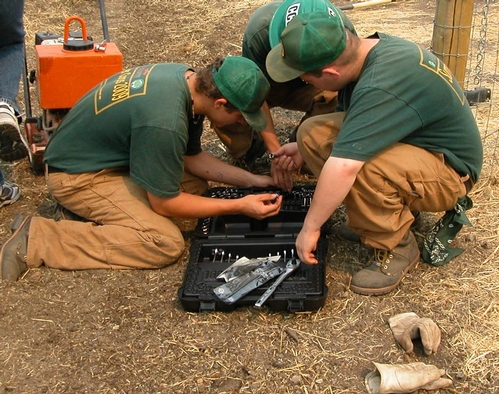





Tuesday, Aug 11: Fifty tons of decomposed granite was delivered to our garden. Ray and Ed were again on site to help supervise the youth crew (four called in sick today) .... we had a reduced number of workers but we still made progress on the pathways. Nell was there in the morning to help with snacks and to serve lunch. Carol Dulitz served a wonderful lunch of tacos, beans, cookies and ice cream. Jutta brought boxes of fruit. The crew members are so appreciative of the special care they are receiving from our MG's. After lunch Susie taught a lesson on invasive species and the purpose of the trapping program of SLO county.

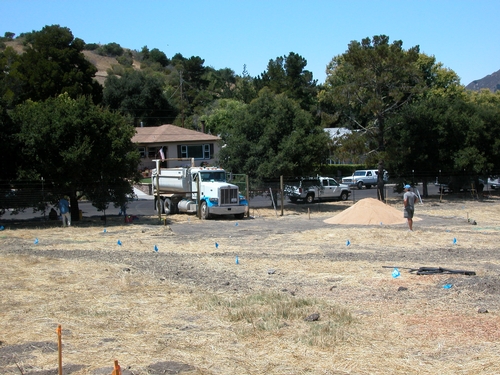
Weds, August 12: Another productive day in the garden! Today we finished putting most of the DG on the pathways and utility area....it looks great! We even have a special focal point! Ray and Ed continued to supervise the troops and we really owe them a vote of thanks. Wes came out this afternoon and did some needed tractor work. Alice brought some wonderful snacks for the crew and Jutta bought pizza for lunch. Nell was there in the morning and Susie was there in the afternoon to help serve and clean up. Wes also did a great lesson for the crew on irrigation systems and how ours was put together. Then Mary had the crew making mud pies as she taught them lessons on how to tell the difference between soil types and she did a great demo on soil erosion. Scott, the landscape designer that did our initial plan came out to see what we have done so far and seemed to be pleased.

Thursday, August 13 Major progress was made on the pathways! The kids are getting burned out. Today was 94F early in the day with no breeze and tomorrow is their last day with the CCC, so they have a bit of senior-itus going on. Four of them called in sick, but the crew manager went to their houses to pick them up. The D.G. is being raked level, water it in once or twice and it sets up. DG is a great product to use because it is a semi-permeable, temporary pathway that can be packed firm enough for wheel chairs to use with out getting stuck (that's what happens in gravel!) Cindy taught a lesson on water conservation practices after lunch. The students had a lot of curiosity. It was really funny that all of them were most curious about low flow toilets and self-composting toilets.. She did a wonderful job. 
